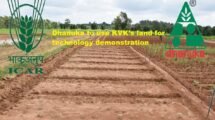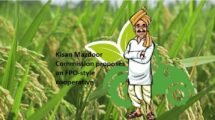An End-to-End Guide on Cotton Farming and its Market in India
Cotton is one of the most significant agricultural crops in India. Cotton farming in India is responsible for millions of farmers’ and workers’ livelihoods in the textile industry. Cotton is cultivated in several parts of India, but Gujarat is the leading cotton producer that accounts for nearly 25% of the total production. In this comprehensive guide, we shall look into cotton farming and its market in India.
India – the cotton production and consumption hub
Cotton is considered a crucial and profit-making cash crop in India due to its economic and social significance. According to several reports from authentic sources, India is the world’s largest cotton producer and second-largest consumer with a global contribution of about 23% and 22% respectively.
The production and consumption of cotton in India are expected to remain stable in the coming years, as the country attempts to achieve self-sufficiency and sustainability in this sector. It is worth noting that the production and consumption of cotton are influenced by various factors such as weather conditions, pest infestation, government policies, domestic demand, international prices, and trade agreements.
The government has taken various initiatives to support the cotton farmers and industry in India by providing…
- Minimum support price (MSP),
- Crop insurance,
- Technology transfer,
- Quality improvement,
- Market development, and so on.
The challenges faced by the sector include climate change, pest management, water scarcity, labor shortage, environmental issues, etc., which require continuous research and innovation.
Also Read | Indian cotton prices begun to match with worldwide export market
Cotton cultivation practices and Innovations
As stated earlier, cotton is one of the most important cash crops in India; however, cotton cultivation practices in India are observed differently at different places based on the soil type, crop area, and water availability that ultimately influence market demand.
Two primary innovative practices in cotton cultivation in India are:
Organic cotton farming: Organic cotton farming is growing cotton without using synthetic pesticides and chemical fertilizers. Such practices are aimed to reduce the harmful impacts on cotton production and, therefore, improving Indian farmers’ income.
Organic cotton farming requires certification from accredited agencies and adherence to certain standards and guidelines. According to a comparative study of sustainable cotton production practices in India, organic cotton farming shows a considerable advantage over conventional cotton farming for several impact categories, such as global warming potential, acidification potential, eutrophication potential, and water consumption.
BCI cotton farming: BCI means Better Cotton Initiative. It is a non-profit organization established to promote more useful cotton production. BCI cotton farming is performed on a set of rudiments and criteria that keep two major factors in mind: the environment and socioeconomic facets of cotton farming.
BCI cotton farming encourages the judicious use of water, chemical fertilizers, and pesticides, to reduce the environmental footprint of cotton farming. BCI cotton farming also supports farmers’ livelihoods by providing training, capacity building, and access to markets. BCI cotton farming is verified by independent third-party auditors and requires a license fee from participating farmers.
Subsidies by the Indian government for cotton farming
The Indian government provides various subsidies and incentives to cotton farming as it is a major source of income for millions of farmers and textile laborers. Some of the subsidies include fertilizer subsidies, debt waivers, minimum support prices, and technology upgradation fund schemes. These subsidies aim to enhance the productivity, quality, and competitiveness of the cotton sector in the domestic and international markets.
Cotton market trends and Outlook
The cotton market in India is likely to observestable growth in the coming years taken that there shall be a high hike in the international and national market demand for cotton products. India is the largest producer and second-largest exporter of cotton in the world. According to some authentic reports, the cotton industry in India assures employment to more than 60mn people and contributes to nearly 3% of India’s GDP.
Some of the key factors that are influencing the cotton market trends and outlook in India are:
- The government’s initiatives to support the cotton farmers and enhance the quality and productivity of cotton through various schemes such as Minimum Support Price (MSP), Pradhan Mantri Fasal Bima Yojana (PMFBY), Cotton Corporation of India (CCI), and so on.
- The rising demand for cotton yarn and fabrics from the textile and apparel sectors, which are witnessing a recovery from the COVID-19 pandemic impact. Textile and apparel exports from India are expected to reach US$ 100 billion by 2025-26, creating a huge opportunity for the cotton industry.
- The increasing adoption of sustainable and organic cotton practices by farmers and manufacturers, in response to the growing environmental and social concerns among consumers and brands. India is one of the foremost manufacturers of organic cotton, contributing more than 50% of the global production at least for the year 2019-20.
- The technological advancements and innovations in the cotton industry, such as digitalization, automation, biotechnology, etc., are enhancing the efficiency and competitiveness of the industry. For example, India has efficaciously produced and marketed Genetically Modified (GM) cotton variations resilient to pests and diseases.
It can be said that the Indian cotton market outlook seems promising as the industry is likely to benefit from fruitful domestic and global market conditions. In addition, there has been marked government support and incentives.
However, some of the challenges that may hamper the growth of the industry are:
• The volatility in the prices and availability of cotton due to climatic changes, pest infestations, trade disputes, etc.
• The competition from synthetic fibers, such as polyester, viscose, etc., that are cheaper and more durable than cotton.
• The lack of adequate infrastructure, skilled labor, quality standards, and research and development facilities in the industry.
Also Read | Govt to consider new certification system for organic cotton, derivatives
To overcome these challenges, cotton agricultural practices in India require focusing on refining the cotton quality through fair practices. Also, it is important to diversify into value-added products and assure the best agrotech for sustainability and traceability. In other words, Indian cotton farmers can invest in the latest agricultural technology to innovate and strengthen their market competitiveness.
Final words
Cotton farming in India requires a hot and moist climate, black soil, and adequate irrigation. There is no denying that cotton farmers in India are facing several challenges including pest infestations along with water shortage and soil degradation. To overcome these challenges, they must embrace standard farming practices such as buying quality cotton seeds from renowned agriculture e-commerce marketplaces such as BadiKheti, reducing the use of pesticides and other chemicals along with techniques to improve soil health, and conserve water.
The opinions expressed in this article are those of the authors.
Author: Govind Marvadi















Add Comment